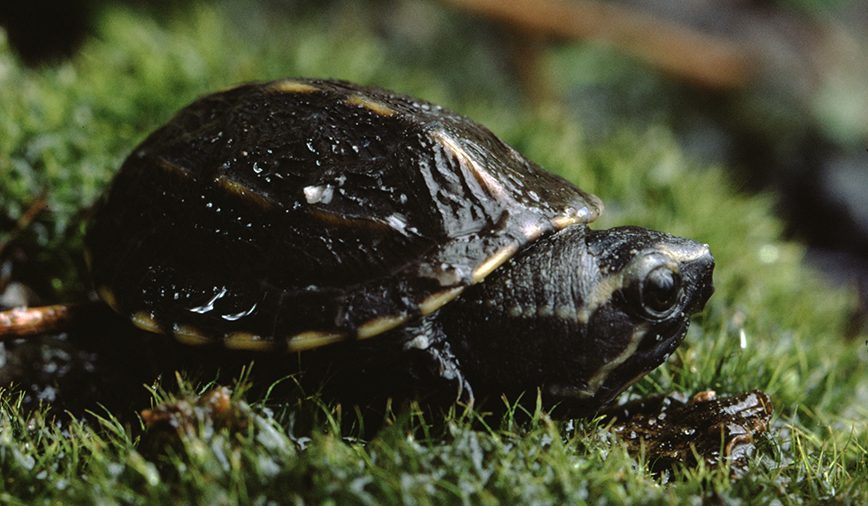This week’s column is the second in a series chronicling lesser known fall season phenomenon.
Ah, babies.
What’s cuter than a tiny robin nestling, its mouth gaping widely as it waits to be fed? Or a tiny fawn curled up in the woods, sun dappling its white-spotted coat?
I may get a little push-back on this one, as cuteness is one of those terms that is completely subjective. But the other day we found a baby animal that, as far as I’m concerned, epitomizes the very essence of cuteness, and yes, even charm. What’s more, its appearance is an example of an annual event that has been taking place every late summer and fall for, I’ll boldly estimate, millions of years.
Take a look at Sternotherus odoratus, a delightful little turtle hatchling we encountered during a recent field trip. Barely bigger than a nickel, it was clearly only recently emerged from an egg Mama Odoratus deposited sometime between two and three months ago.
Turtles, being ectotherms—the fancy word for cold blooded—don’t incubate their eggs. Instead, they either dig a nest or lay their eggs among debris and then let summer’s ambient heat provide the warmth the embryos need to develop. As the months progress, so do the turtles—provided the nest doesn’t get predated, or dug up and consumed, by foraging raccoons or skunks or any number of other animals equipped with a nose for sniffing and claws for digging.
As summer draws to a close, some of the surviving nests begin to erupt. Hatchlings bust their way out of leathery-shelled eggs and make their way to water—river, creek, pond or marsh—where they’ll spend the winter in a hibernation-like state called brumation. Other nests, typically of clutches that were laid a bit later, may also experience activity; those hatchlings, however, will wait out the cold weather in place and make the trek to water come spring.
You may have been lucky enough to come across a baby turtle this fall. I know I received several emails from folks who’d found baby snappers and spiny softshells on the move in September.
And now we can add odoratus to that list. Actually, I think I’ll go one step further and note its common names: the eastern musk turtle, or stinkpot.
That’s right, the cute little turtle with the bright eyes and striking head stripes has a hidden, and somewhat unflattering feature. They smell bad.
But not without good reason! The strong musk they release when disturbed appears to provide them with a chemical defense against predators.
What’s interesting about these glands, which really aren’t uncommon in the world of turtles—most species have them—is that odoratus has developed the ability to release them voluntarily. That sort of behavior would imply that the odor is used for a particular purpose.
As our area’s smallest turtles—adults measure about 5 in. long—stinkpots would certainly seem to need an edge when it comes to defense. Their list of potential predators includes raccoons, wading birds like egrets and herons, largemouth bass and even their close cousins, snapping turtles. (The species also has one recorded incident of “death by mussel,” wherein a pondmussel, Ligumia subrostrata, clamped its shell down on the head and neck of a stinkpot as it was presumably foraging. The ill-fated individual died of either drowning or suffocation. Not really predation, but certainly weird enough to note.)
The day we found our little musk turtle, I was so surprised—thrilled, even—that it didn’t even occur to me to try and catch a whiff of its, ah, essence. Instead, I took pictures. Lots and lots of date-stamped pictures to document exactly when this small, intriguing and incredibly cute baby reptile was found.
I want to be sure and remember to look for hatchling stinkpots again, and next fall will be here before we know it.
Pam Otto is the manager of nature programs and interpretive services at the Hickory Knolls Discovery Center, a facility of the St. Charles Park District. She can be reached at 630-513-4346 or potto@stcparks.org.

